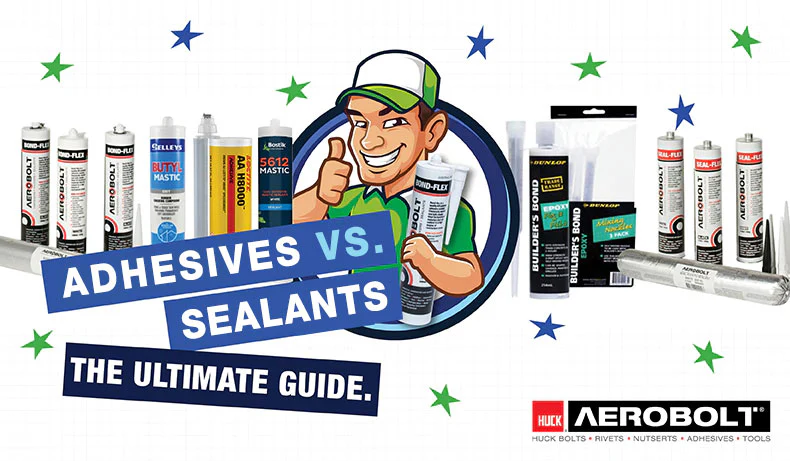
A Beginner's Guide to Understanding the Difference Between Adhesives and Sealants
Gone are the days when joining or sealing two materials meant reaching for bolts, rivets, or welds. Nowadays, there's a vast array of adhesives and sealants offering simple solutions across both the building and industrial fabrication sectors. In many cases, these non-metallic substances outperform traditional single-point metal fasteners. Adhesive glues and sealant caulks excel at binding or sealing different materials together while distributing stress more evenly. They're cost-effective and aesthetically pleasing compared to mechanical fasteners, providing greater design flexibility. This beginner's blog dives into the world of adhesives and sealants, exploring how these products contribute to a cleaner, more polished finish.
Before we compare adhesives and sealants, let’s cover the basics. An adhesive or glue is a high-strength product designed to join two materials together. It's applied to one surface of two separate items, forming a bond that resists separation. On the other hand, a sealant or joint sealant is a lower-strength caulk product ideal for filling and sealing gaps between different materials. Sealants prevent air and water from entering openings and accommodate differential movement. While this is the fundamental distinction, many adhesives work well as sealants and vice versa. The key to choosing the right product lies in understanding your application and desired outcome.
What Are the Key Advantages of Adhesives and Sealants?
Adhesives and sealants offer several advantages over mechanical fasteners like rivets or Huck bolts, including thermal bonding similar to welding:
- Provides an invisible fastening solution for a sleek, seamless finish compared to traditional fasteners.
- Distributes weight uniformly over a larger area, creating a stronger bond.
- Handles stress more effectively than a single-point metal fastener.
- Accommodates thermal movement between different material types.
- Time and cost-efficient, leading to improved productivity compared to using metal fasteners.
- Offers excellent sealing against moisture, salts, UV light, and more.
What Are the Main Types of Adhesive Glues?
There are countless types of adhesives with varying chemical compositions, also known as glues, cements, or pastes. In this blog, we'll focus on synthetic adhesives used in the building and industrial fabrication sectors rather than natural glues. We’ll provide an overview of examples like MS Polymer, Polyurethane, Epoxy, Polyamide, and Acrylic, among others.
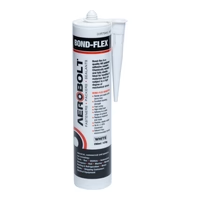
MS Polymer Adhesive.
This is the latest-generation high-performance, eco-friendly adhesive originating in Japan. It combines the best features of silicone and polyurethane without their drawbacks. An easy-to-use all-rounder requiring minimal surface preparation. Examples include Aerobolt's structural adhesive range—Bond Flex and Bond Flex Plus—and popular options like Bostik® Xtreme® and Soudal® T-Rex®. Highly versatile, it bonds well with nearly any material. Recommended for most applications. Mid-price range.
Polyurethane Glues & Adhesives.
Polyurethane is another strong, flexible adhesive that bonds well with a wide range of materials, including plastics, metals, and wood, making it popular in both construction and industrial sectors. Generally, polyurethane offers excellent stretch resistance and movement tolerance. Examples include Bostik® Matrix® FC, Sikaflex® 252, and Sikaflex® 221. Low price range.
Silicone Adhesives.
Some silicones possess adhesive properties for various materials and applications. In construction, silicone is often considered superior to polyurethane, though it cannot be painted. A top choice is Bostik’s Industrial Grade Silicone. This product boasts superior adhesive properties, working well with numerous materials and is Aerobolt's go-to silicone for many construction clients. Bostik® V60 is a construction adhesive suitable for painted and anodized aluminum and glass applications. V60 maintains its elastomeric properties permanently, even under harsh conditions and extreme temperatures. Its thixotropic nature prevents slumping in typical construction joints, ensuring excellent UV stability and long-term reliability.
Epoxy Adhesives.
Epoxy is a two-part adhesive formed by mixing epoxy resin with a hardener. These components are stored separately and mixed before use. While not as flexible as MS polymers or polyurethanes, epoxies offer better shear strength and longer open times, allowing for complex assemblies. Epoxy adheres to a wide range of surfaces, including metals, fiberglass, wood, plastics, stone, concrete, etc. Examples include Lord® 310 series, Dunlop® Builders Bond, Selleys® Araldite, and more. High price range.
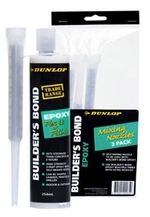
Dunlop Builders Bond
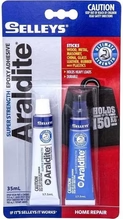
Selleys Araldite
Acrylic Glue.
Famous worldwide, Super Glue® is an acrylic glue. There are numerous acrylic adhesives available, including MMA's and cyanoacrylate. Methyl methacrylate adhesives (MMA’s) are a type of acrylic comprising resin and hardener. When cured, MMA’s form a strong bond with excellent resistance to shear, peel, and impact stresses. Examples include Crestabond® M1 series, 3M® Scotch-Weld, Super Glue® (Cyanoacrylate), Loctite® H8000, and more. High price range.
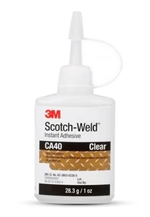
3M Scotch-Weld®
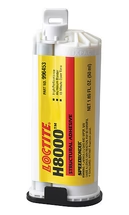
Loctite H8000®
Polyimide Glue.
For high-temperature applications, Polyimide provides excellent thermal resistance in the range of 240–500 degrees Celsius. High price range.
Other types of adhesives include white craft glue, yellow timber glue, hot glue, spray adhesive, cyanocrylate (aka Superglue®), etc.
What Are the Main Types of Sealant?
A sealant is a low-strength product ideal for filling and sealing gaps between different materials. The following sealants listed are based on their chemical makeup, and each sealant’s suitability depends on various factors. Popular sealants or caulking products include polyurethane, silicone, MS polymer, polysulfide, latex, acrylic, and more.
MS Polymer Sealant.
These are relatively new entrants in the sealant world, curing to become fully elastic after application. They’re suitable for a wide range of materials with minimal surface preparation. Examples include Soudal® Multibond SMX50 and Bostik® Xtreme Flex. Mid-price range.
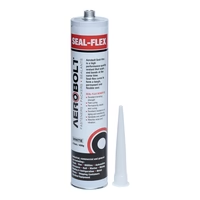
Polyurethane Sealant.
Polyurethane or PU sealants are tough, abrasion-resistant caulks that are paintable. They offer great adhesion with good movement capability but don’t work well with glass. Examples include Aerobolt Seal Flex, Bostik Seal N Flex 1, and Sikaflex® 221 or Sikaflex® 11FC. Low price range.
Silicone Caulk Sealant.
Silicone sealants are commonly used in areas prone to expansion and contraction. They act as barriers to prevent air and water passage, making them ideal for bathroom and kitchen applications. Silicone is highly flexible and popular in the construction industry. Unlike polyurethane, it doesn’t require follow-up painting. A popular joint sealer for caulking is Bostik 6S Sanitary. This product has superior mold resistance and works well with numerous materials found in bathrooms and kitchens.
Butyl Sealant.
Butyl sealants are synthetic rubber blends that demonstrate strong adhesion to a wide variety of materials, including metal, glass, concrete, and wood. Butyl forms a tough outer layer but remains pliable underneath. Ideal for sealing joints in curtain wall systems, metal panel joints, door frames, drains, windows, or against neoprene or EPDM surfaces, it withstands vibration and is slightly challenging to apply. Examples include Selleys Butyl Mastic or Bostik’s 5612 Mastic. Low price range.
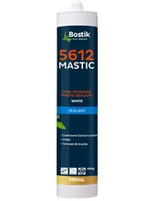
Bostik® 5612 Mastic®
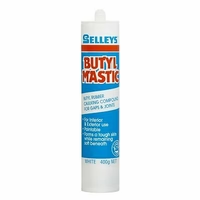
Selleys® Butyl Mastic
Polysulfide Sealant.
Polysulfide sealants are water and chemical resistant but don’t handle much movement. Commonly used in swimming pools and other submerged environments, they often require priming. Polysulfide sealants tend to be relatively expensive.
Other sealants include latex, acrylic, and silicone, which we’ve already covered.
Summary: Structural Adhesives, Silicone, and Joint Sealants
We've explored the range of adhesives and sealants today. Hopefully, this guide has demystified these products and alleviated any anxiety around selecting the right one for your needs. At Aerobolt, we offer a comprehensive selection of structural adhesives, silicones, and joint sealants to help with your next project. In fact, Aerobolt has its own private-label range of high-quality products that perform well in almost any application. Click here to view our range of adhesives and sealants. Alternatively, feel free to call or contact us for all your sealant requirements—we’d love to assist you.
Copyright © 2024 Aerobolt Australia Pty Ltd. All rights reserved.
Â
Led Emergency Blub Light, Blackout Backup Emergency Bulb,Backup LED Light Bulb
Guangdong Dp Co., Ltd. , https://www.dp-light.com